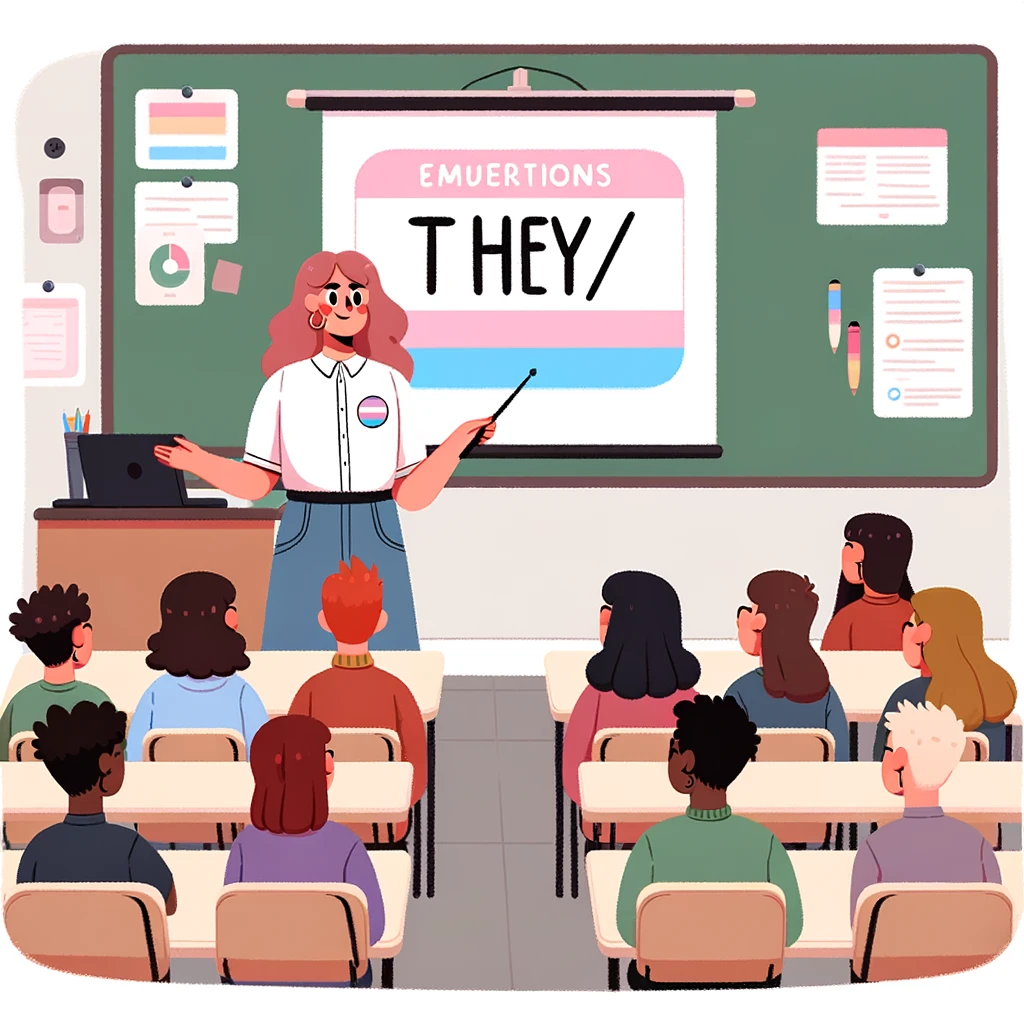Estimated reading time: 3 mins
In today’s world, email communication is more than just exchanging information. It’s about building connections, respecting identities, and fostering inclusivity. A significant part of this inclusivity is the use of pronouns like he/him or she/her meaning in email signatures. But what exactly do these pronouns mean and why are they important? This post delves into the meaning and significance of these pronouns in email communications.

He/Him and She/Her Meaning: The Basics of Pronouns
Pronouns are used in place of a person’s name. ‘He/him’ and ‘she/her’ are examples of gender-specific pronouns. ‘He/him’ refers to someone who identifies as male, while ‘she/her’ refers to someone who identifies as female. Whereas They/them refers to someone who identifies neither as male or female. Pronouns convey how someone identifies their gender. And in communication, they’re crucial for respecting that identity.
Why Pronouns in Emails?
- Respect and Inclusivity: Including pronouns in emails is a sign of respect. It acknowledges and respects the recipient’s gender identity. It’s about creating an inclusive environment where everyone feels seen and respected.
- Clear Communication: Pronouns in emails eliminate assumptions about gender. They provide clarity on how the individual prefers to be addressed, avoiding misgendering (referring to someone using a pronoun that doesn’t correctly reflect their gender).
- Normalization of Gender Diversity: Using pronouns in emails helps normalize the conversation about gender diversity. It encourages a culture where discussing and respecting gender identity is standard practice.
- Support for the LGBTQ+ Community: Including pronouns is particularly supportive of transgender and non-binary individuals. It shows awareness and respect for the complexities of gender identity.
How to Use They/Them, He/Him and She/Her Pronouns in Emails
- Email Signature: The most common place to include pronouns is in the email signature. It’s a simple addition that can read, for example, “Jane Doe (She/Her)”.
- During Introductions: When introducing yourself in an email, you can include your pronouns. For example, “Hi, I’m John, and I use he/him pronouns.”
- When Addressing Others: If you know the pronouns of the person you’re emailing, use them. If unsure, it’s okay to politely ask.


Understanding the They/Them, Use He/Him and She/Her meaning in Pronouns
- He/Him: When someone lists ‘he/him’ in their email, they are communicating that they identify as male. Address them as ‘he’ in your communication.
- She/Her: Similarly, ‘she/her’ indicates that the person identifies as female. Use ‘she’ when referring to them.
- They/Them: Some individuals prefer gender-neutral pronouns like ‘they/them’ (not covered in the title but equally important). This can be for those who identify as non-binary, meaning they don’t exclusively identify as male or female.
The Importance of Getting It Right
- Fosters a Respectful Environment: Using the correct pronouns is a fundamental part of respecting a person’s identity. It fosters a culture of respect and inclusivity.
- Avoids Misgendering: Using the wrong pronoun can be hurtful and disrespectful. It’s important to pay attention and use the pronouns a person has identified with.
- Reflects Professionalism: In a professional setting, using correct pronouns shows attentiveness to detail and respect for colleagues and clients.
What If You Make a Mistake?
It’s unlikely you made a deliberate mistake. It can be resolved!
- Apologize and Move On: If you use the wrong pronoun, apologize quickly, correct it, and move on. Dwelling on the mistake can create discomfort.
- Learn from the Mistake: Use the experience as a learning opportunity. Pay closer attention to pronouns in future communications.
How to Respond to Misgendering in Emails
- Correct Politely: If someone uses the wrong pronoun for you, correct them politely. A simple “Actually, I use she/her pronouns” is sufficient. Most people will misgender purely by accident, and shaming people probably won’t get a positive outcome.
- Educate if Necessary: Sometimes, people may not understand the importance of pronouns. If appropriate, you can provide a brief explanation.
The Evolving Language of Gender, and the They/Them, Use He/Him and She/Her Meaning


Language around gender is constantly evolving. Staying informed and adaptable is key. Recognize that the conversation about gender and pronouns is an ongoing one, and that many people are still catching up.
In Conclusion
Incorporating pronouns like ‘he/him’ and ‘she/her’ in emails is a small yet significant step towards more inclusive and respectful communication. It’s about acknowledging and celebrating the diversity of identities. By doing so, we contribute to a culture that values each individual for who they are. Remember, the goal is not just to communicate but to connect, respect, and understand. However, the choice is yours to use it.

Oh wow, I had no idea that using pronouns in emails was such a groundbreaking concept. I mean, who needs to actually talk to people and get to know them when you can just assume their gender based on their name, right? Such inclusivity!
I take it from your sarcastic tone that you don’t agree? Sure, this is a concept that many people don’t get or struggle with. But it’s also important to many people too. It’s a choice of whether to be considerate and inclusive, or be selfish and exclusive, IMHO.